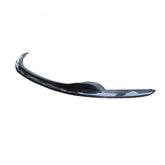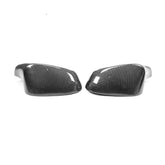Track days offer the ultimate adrenaline rush for automotive enthusiasts, providing a safe, controlled environment to push your Type R to its limits. Whether you're a seasoned racer or new to the track, preparing your vehicle is crucial for both performance and safety. Here's a comprehensive guide to getting your Type R race-ready, ensuring you can focus on the thrill of the drive.
1. Technical Inspection: Safety First
Before hitting the track, a thorough technical inspection is non-negotiable. This includes checking brakes, tires, suspension components, and fluid levels. Ensure that your brake pads have sufficient material for the day's abuse and that your brake fluid is high-performance, capable of withstanding high temperatures without boiling.
2. Tires: Your Contact with the Track
Tires are arguably the most critical component for a successful track day. Opt for high-performance tires suited for track use, ensuring they are correctly inflated according to your vehicle's specifications and track conditions. Inspect them for wear and ensure they have adequate tread depth. Remember, the right tires can dramatically improve handling and lap times.
3. Suspension Tuning: Finding the Sweet Spot
A well-tuned suspension can transform your Type R's track performance. Consider investing in adjustable coilovers that allow you to tweak ride height, camber, and damping. For track days, a stiffer suspension setup can reduce body roll and improve handling, but remember, the optimal settings depend on the track layout and surface condition.
4. Lightweight Components: Shedding the Pounds
Weight reduction can significantly enhance your Type R's acceleration, braking, and cornering. Consider lightweight components like carbon fiber body panels or a stripped-down interior. However, prioritize safety and ensure that any modifications comply with track regulations.
5. Cooling System: Keeping Temperatures in Check
High-speed track driving puts immense stress on your engine and cooling system. Upgrade to a high-capacity radiator and consider additional cooling solutions, such as oil coolers, to prevent overheating. Regularly check coolant levels and the condition of hoses and clamps.
6. Data Logging and Telemetry: Analyzing Performance
Modern technology allows drivers to analyze every aspect of their track performance. Invest in a data logging system to monitor lap times, G-forces, and other critical parameters. Reviewing this data can identify areas for improvement in both your driving technique and vehicle setup.
7. Driver Gear: Protection is Paramount
Safety gear is as important as your car's preparation. Invest in a high-quality helmet, racing gloves, and, if possible, a racing suit and shoes. Ensure your helmet meets the safety standards required by the track. Comfortable, fire-resistant clothing can provide additional protection.
8. Emergency Kit: Preparing for the Unexpected
Always have an emergency kit on hand, including basic tools, spare parts like belts and hoses, tire inflation products, and a first aid kit. Being prepared can mean the difference between a minor setback and the end of your track day.

9. Fuel: Full Tank, Full Throttle
Ensure you start with a full tank of high-octane fuel suitable for your Type R's performance needs. Consider bringing additional fuel cans if the track does not have on-site fueling facilities. Running out of fuel mid-session can put a damper on your day.
Conclusion: Ready, Set, Race!
Preparing your Type R for a track day is both an art and a science. By focusing on safety, performance, and data analysis, you can ensure not only a thrilling experience but also a productive one. Each track day offers an opportunity to learn and improve, both as a driver and in fine-tuning your vehicle. With your Type R prepped and ready, all that's left is to hit the track and enjoy the pure exhilaration of racing.










